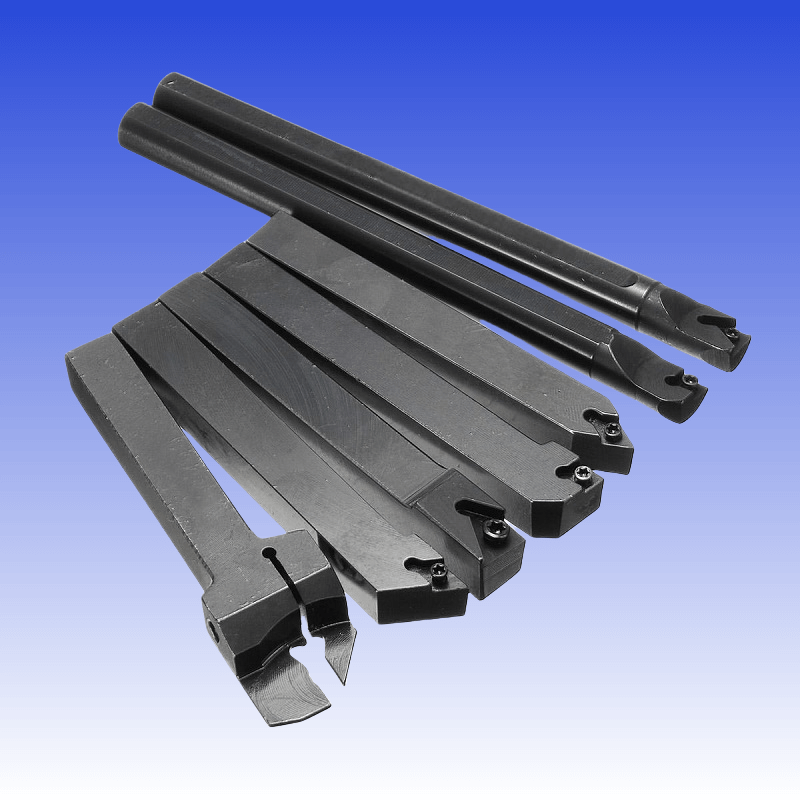
Carbide inserts are known for their hardness and durability, making them essential components in modern CNC machining. However, it can be frustrating when these inserts break unexpectedly—especially while properly mounted in a tool holder. This article will explore the most common causes of carbide insert breakage, how your tool holder setup might be contributing to the problem, and how to fix these issues to improve performance and tool life.
One of the most common causes of insert breakage is incorrect clamping. If the insert is not seated firmly or aligned properly in the pocket, it may shift under cutting forces, leading to chipping or fracture.
Using worn or damaged clamp screws
Failing to clean the insert pocket before installation
Over-tightening or under-tightening the locking screw
Using the wrong insert geometry for the pocket shape
Solution: Always clean the tool holder pocket thoroughly, use a torque wrench to ensure proper tightening, and replace worn screws or clamps regularly.
A damaged or poorly aligned tool holder will exert uneven pressure on the insert, resulting in high stress points that can cause breakage during cutting.
Visible wear or burrs in the insert seat
Insert doesn’t sit flush or rocks slightly when clamped
Chips collecting inside the pocket or clamp area
Solution: Inspect the holder regularly for wear, ensure alignment with the spindle or turret, and replace worn tool holders.
Different cutting materials and applications require specific carbide grades and geometries. Using a general-purpose insert for hard materials, or an insert with too sharp an edge for interrupted cutting, will often lead to breakage.
Solution: Choose the correct carbide grade for the workpiece material and cutting conditions. Refer to the manufacturer's recommendation or consult a tooling expert.
Even the best insert and holder combination will fail under overly aggressive cutting parameters. Feed rate, spindle speed, and depth of cut must be balanced to prevent mechanical overload on the insert.
Too high feed per revolution (f/rev)
Very deep cuts with insufficient rigidity
High cutting speeds without coolant
Solution: Start with conservative settings and gradually optimize. Always refer to recommended cutting parameters for the specific insert type and workpiece.
Overheating and chip jamming are silent killers of carbide inserts. Without proper cooling or chip removal, the insert can suffer thermal shock or be physically damaged by recutting chips.
Solution: Use high-pressure coolant systems, air blast, or through-tool coolant holders. EstoolCarbide offers internal coolant tool holders designed for optimal chip evacuation and insert cooling.
Vibration (chatter) creates dynamic loading on the insert edge, which carbide is particularly vulnerable to. This is often caused by long overhangs, unstable setups, or loose machine components.
Solution: Minimize overhang, use dampened or reinforced tool holders, and ensure the machine is leveled and stable.
Carbide insert breakage in the tool holder is often a symptom of underlying issues—ranging from improper setup to incorrect cutting strategy. By ensuring the correct clamping method, matching insert grade to the job, maintaining your holders, and adjusting machining parameters, you can dramatically extend insert life and improve overall machining efficiency.
If you have any questions about choosing the right tool holders or carbide inserts, feel free to contact us anytime at EstoolCarbide.com.
Contact person: Steve Lee
E-mail: [email protected]
Phone: 86-731-22200908
Address: Floor 4,Building NO.15,Zhichuang Plaza,NO.1299,Liyu Road,Tianyuan District,Zhuzhou City, Hunan, P.R. CHINA
Tel:0086-19973342799
E-mail: [email protected]

WeChat Official Account